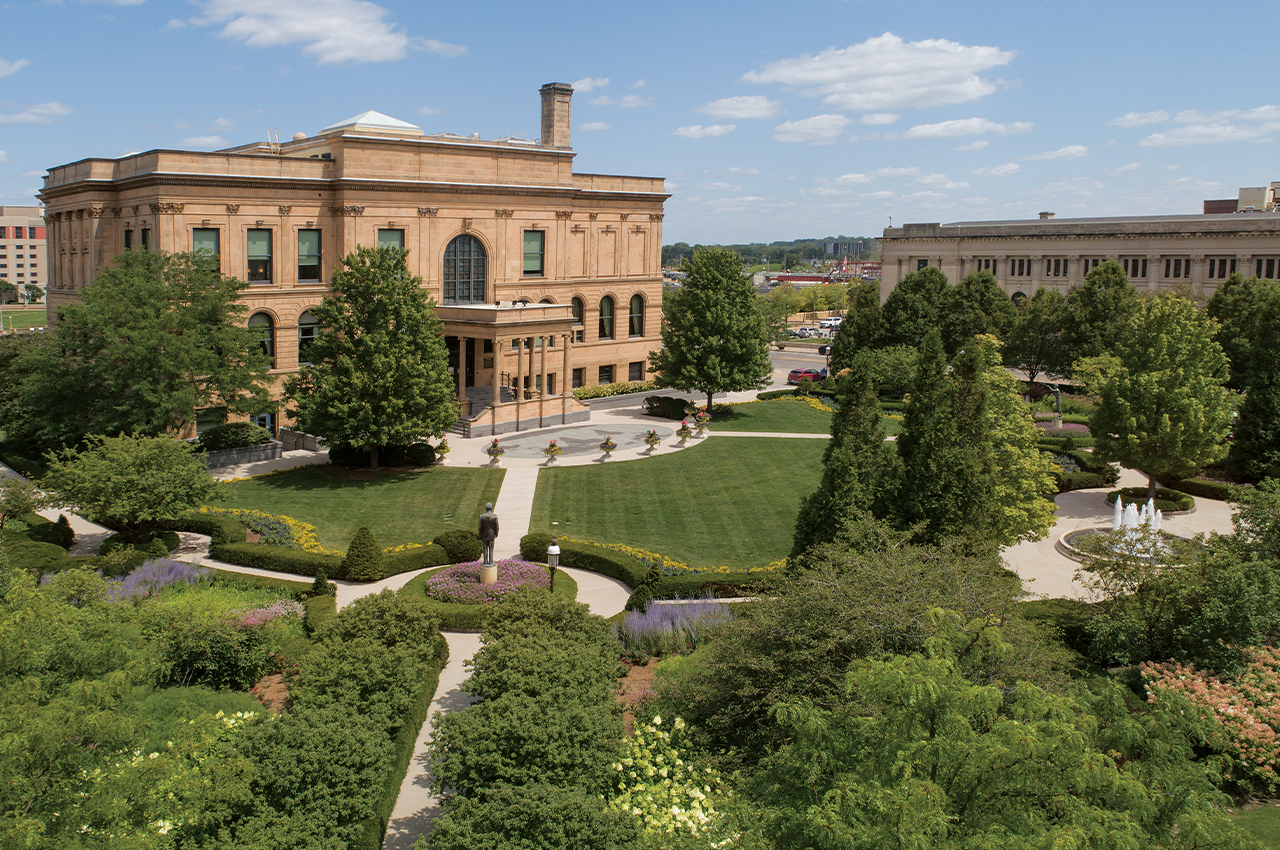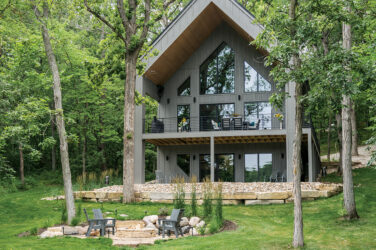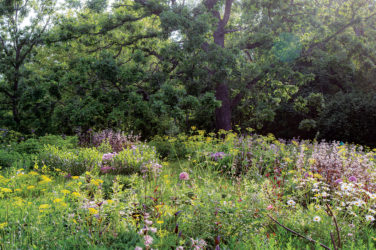The formal Ruan Garden at the World Food Prize Hall of Laureates opened to the public in 2011, offering an urban oasis on the west side of the former Des Moines Public Library, built in 1903. Photo: Duane Tinkey
Writer: Veronica Fowler
Everyone knows about the Smithsonian Institution and its many museums in Washington, D.C. It houses everything from antique hairpins to vintage fighter jets, earning it an affectionate reputation as “America’s Attic.”
Apparently, it’s also America’s Backyard. The Smithsonian has archived records of more than 10,000 American gardens, past and present, including many in Iowa.
In its Archives of American Gardens, the Smithsonian maintains a vast collection of photos, garden and landscape plans and plant lists, plus historical details about various owners, garden designers and garden clubs, all gleaned from garden tour flyers, newspapers and magazine clippings. There’s also a fascinating online archive, featuring many of the same elements. In all, the archives contain 65,000 images and records.
The online archives (at gardens.si.edu/collections/archives) allow you to be an armchair traveler to virtually stroll through all sorts of gardens, across the country and back through time. Some of the gardens have faded from their peak glory or have disappeared altogether.
Most of the documented gardens are grand. But some are very modest, like an old cutting and vegetable garden in Marion, Iowa, with just a photo and brief description.
Smithsonian Museum Specialist Joyce Connolly says the garden archives provide a snapshot of what gardens in Iowa and elsewhere looked like over a broad period of time with a diverse assortment of owners. (You can even document your own garden and submit an online application for consideration in the archives, adding your own green thumbprints to the historical record.)
Some of the gardens in the archives are still thriving and open to the public, like the Better Homes and Gardens Test Garden and formal gardens at the World Food Prize Hall of Laureates in Des Moines (see listing below). Others are private gardens that can be visited only by appointment or during a local garden tour.
Here, for example, is part of the contents of the Smithsonian’s electronic folder for the Ortberg Gardens at Forest Hill in Cedar Rapids. The garden is part of a private residence and dates back to the 1930s, but it has evolved over the decades. As the archives describe it:
The Greek Revival house had an interesting history, having been cut in half and moved from its original location to this one and one-third acre hillside lot in 1929. The gardens, lawn and trees installed by previous owners had been neglected by the time the current owners took possession in 1997.
Clearing the weeds from a semi-shaded circular bed uncovered the original hosta and peony garden planted by the Armstrong family circa 1930. The owners added limestone edging and a large iron urn as a focal point, along with spring blooming daffodils, trillium, bleeding heart, blue bells, pulmonaria, and allium, which are followed by astilbe, wild ginger, hydrangea, and turtlehead (chelone) in summer. … The sunny backyard was redesigned in 2003, adding a limestone retaining wall to divide it into two levels with a fountain on the upper level. A small part of a glass conservatory that was about to be demolished was acquired and attached to the garage, and is used in spring for starting heirloom vegetables and flowers, then used for dining in summer when the trees have leafed out and shaded the room.
Gardens are ephemeral, changing every year, every season and even every day. But at the Archives of American Gardens, they’re preserved forever without weeding, watering or mulch. All they require is your curiosity.
Smithsonian Gardens in Iowa
While some of the gardens archived in the Smithsonian collection are long gone, many are thriving and open to visitors.
Cedar Rapids
Coe College Alumni House Garden
Located on the Coe campus, it features a brick terrace, sculptures and a formal English garden with a fountain, benches and gravel walkways. Visit for free 8 a.m.-5 p.m. weekdays.
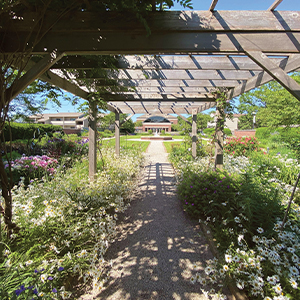
The gardens of the Coe College Alumni House in Cedar Rapids. Photo: Coe College
Clinton
Bickelhaupt Arboretum
This 14-acre public “plant museum” was established in 1970 around the home of Bob and Frances Bickelhaupt and features one of the top garden conifer collections in the country, with more than 600 cultivars. It’s open dawn to dusk daily with free admission.
Des Moines
Better Homes and Gardens Test Garden
This enclosed garden on the west end of downtown enables Dotdash Meredith garden editors to test new plants and stage photo shoots. It’s open to the public for free, self-guided tours noon-2 p.m. Fridays from May through September. Groups of 10 or more may schedule guided tours by appointment; call (515) 284-3994.
Des Moines
Greater Des Moines Botanical Garden
A favorite public garden ever since it was created in 1979, this site spreads over 12 acres with extensive water gardens, an iconic glass dome protecting a tropical garden and more. Open Tuesday through Saturday; $12 for adults, with discounts for seniors, military personnel and kids.
Des Moines
Janis and John Ruan III Garden at the World Food Prize Hall of Laureates
This small formal garden with a central fountain is a peaceful downtown oasis, nestled in front of the former public library. It’s open to the public all the time, except during private events.
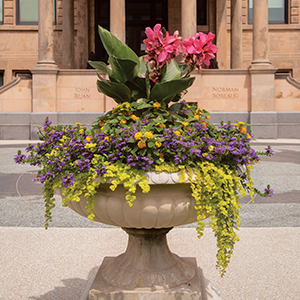
A planter at the World Food Prize Hall of Laureates in Des Moines. Photo: Duane Tinkey
Iowa City
Plum Grove Historic Home
The two-story brick home of Iowa’s territorial governor, Robert Lucas, and his wife, Friendly, is the main attraction here, but the historic kitchen garden and two flower gardens are also worth a visit. It’s open, free of charge, 1-5 p.m. Wednesday through Saturday in the summer and 1-5 p.m. weekends through October.
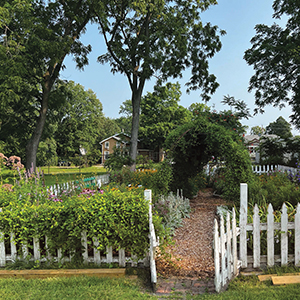
At the Plum Grove Historic Home in Iowa City, master gardeners tend to plots originally planted in the 1840s by Friendly Lucas, first lady of the Iowa Territory. Photo: Carolyn Murray / Johnson County Master Gardeners
Urbandale
Living History Farms
This popular 500-acre open-air museum features historical interpreters living, cooking, farming and gardening much in the same way that Iowans did decades and centuries ago. Learn about the Indigenous Ioway techniques for rotating squash and beans. Visit the 1850s farm where settlers planted vegetables and medicinal herbs. Enjoy the formal Victorian flower garden at the 1867 Flynn Mansion and the sprawling vegetable garden at the 1900 farmhouse. Visit 9 a.m.-4 p.m. Tuesday through Saturday, May through October; $19 for adults, with discounts for seniors, military personnel and kids.
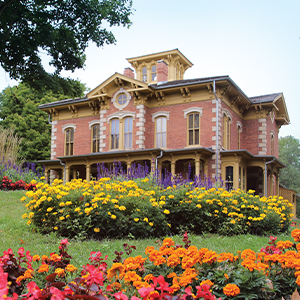
Marigolds surround the 1871 Flynn Mansion at Living History Farms in Urbandale. Photo: Living History Farms


